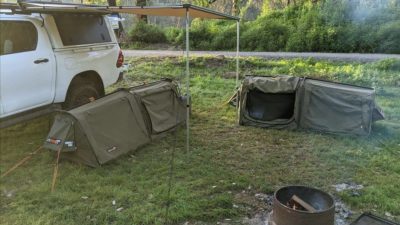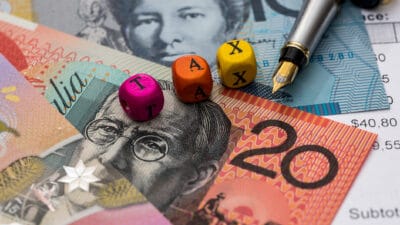You know Ooshies, right?
Those little rubbery plastic things, representing Walt Disney Co (NYSE: DIS) characters (I own shares, by the way) that Woolworths Group Ltd (ASX: WOW) is giving away with every $30 you spend in-store.
Yeah, those.
They were banned at my son's school yesterday.
No bringing them to school, and definitely no trading.
Which was slightly disappointing for my young bloke, but at least he got his trades in before the deadline!
(It's also possible that he and his mates were, at least partly, responsible for the ban. Nothing bad happened, but the teachers weren't born yesterday. They've seen this movie before — footy cards, marbles, Tazos and previous generations of Ooshies — and were quick to shut it down.)
I support the decision. Seven year-olds don't really have the emotional control required to deal with a trade gone bad.
Actually, neither do some adults, but I digress.
So, I support it, but it's also a bit of a shame.
Sans the potential distress and potential for conflict, trading Ooshies has the potential to teach our kids some important lessons.
Here's how the last few days went down:
My son wanted a particular Ooshie (Darth Vader, if you're wondering) that he didn't yet have. Another kid in his class had that one, and was happy to swap it for a particular one of ours (alas, I can't recall whether it was Glitter Elsa, Buzz Lightyear or C-3PO, sorry!).
They had independently determined that the value of the 'other' one was worth trading for.
In short, they're understanding price and value. Not as investors — yet — but just as economic actors.
Supply and demand. Price. Value.
At 7, they're bartering; the precursor to the modern economy.
But there was a twist.
At the agreed time, his mate changed his mind. I'm not sure whether there were other factors in his decision (parents, siblings, other kids, perhaps), and it doesn't really matter, but he decided the swap wasn't worth it.
Again, a good experience for them both.
There was no grief or conflict, and both hopefully learned something about making a deal, assessing value and, yes, buyer's remorse.
But my young bloke still had Ooshies to trade (they were doubles of what he already had), and other kids had Ooshies he wanted.
"Maybe", he thought, "I should give another kid 3 or 4 Ooshies, to get the one I want".
I instinctively recoiled. Nicely, I asked 'Do you think that's a good trade? You're giving up 3 or 4 and only getting 1.".
In jest, but with a message to impart, I asked "What if I offered you my $1 for your $4?"
He thought the money question was silly — I was relieved! — but still wanted to trade the Ooshies.
The investor in me wanted to talk to him about supply and demand and opportunity cost, but that might have to wait a few years.
Still, I don't think he was completely wrong.
After all, a 4-for-1 swap felt seriously imbalanced.
But on the other hand, those 4 he was prepared to swap were all doubles.
They weren't worthless, but for kids who are keen to collect at least one of each of the whole set, doubles aren't particularly valuable.
And if you can swap 4 lower-value Ooshies for 1 higher value one, that might just be a good deal, after all.
So I wasn't too unhappy about the idea.
I did say — ineffectually at this age — that maybe he could trade those 4 Ooshies with someone else for maybe 2 or 3 Ooshies instead.
He got the point I was making, but really wanted the one he'd get from his four-for-one trade.
Fair enough.
There was — befitting an epic of the genre — more to the tale.
He got home from school with 4 new Ooshies.
It turns out that a functioning market actually works.
When there's only one buyer and one seller, you have two choices: in the words of the TV show; Deal, or No Deal.
But when there's a market, you can take your scarce resources (in this case, your duplicate Ooshies, obviously), and weigh up which deals give you the best value.
Sure, he wanted that one Ooshie, but other kids were offering different deals.
Better deals.
He worked out that he could get more for his 'money' by shopping around.
There are so many lessons here.
Lessons that I could have tried to teach him, but which he's learned far more usefully by actually doing it himself.
He doesn't understand the theories of supply and demand, or opportunity cost, or markets, or regulations (thanks, Teach!). He can't comprehend the equations behind relative value, or the concepts of the endowment effect, scarcity or competition.
But he experienced all of that in a few short hours at school this week.
There truly is no better teacher than experience.
As I said, I'm happy for his teachers to make the call to stop it. They're good people, they know the kids, and have the experience.
And far better for the kids to have a little exposure, then have the experiment stopped before it goes off the rails!
Which is a nice little story, but so what?
Here's what I take away from it, for myself, and what I want to share with you:
Firstly, markets work. They don't work perfectly, but they're still better than anything else we've tried, at scale, as a society. I can only speak for my kid, but assuming everyone was trading freely and without coercion, and because the kids could simply walk away if they didn't like the deal, the existence of the market created better outcomes overall.
Second, they need good regulation. The teachers know what tends to happen, over time, when emotions get heated, and the market is distorted. For kids, shutting the market is the right option. That's also sometimes (but rarely) the right decision for adults, too. But, given our more developed brains, good regulation helps markets operate more effectively.
Third, opportunity cost. My young bloke doesn't know the phrase, but you do. He had 4 Ooshies to trade. The 'opportunity cost' of trading them for one Ooshie is that he can't trade them for anything else. Or, more concretely, he could have swapped them for Darth Vader, or for a few others. The opportunity cost of Darth Vader is that he can't have the other ones, and vice versa.
Fourth, and related, he could have done any number of deals, just as you and I can buy any number of shares. But we can't buy them all. I'm regularly asked to give my view on Company A or Company B in media appearances. Many of them will increase in value. Fewer will beat the market. And, of those that do, there'll be a range of returns, from good to stupendous.
The question isn't just "Will this share price rise".
Instead, we should be asking: "Is this the best use of my money?".
Investors, like Ooshie traders, need to do their best to maximise the value from each transaction.
Speaking of which, I want you to think about share trading, but in a different sense of the word.
I want you to think like a 7 year old for a minute.
See, "Which shares should I buy with my available cash?" is the question we're used to asking.
But I want you to think of your portfolio as an Ooshie collection for me.
Is your 'Ooshie Collection' the right one? Because, while I detest over-trading, you should always make sure your portfolio is optimised.
You could swap one of your share market Ooshies for any one of 1,500 other share market Ooshies.
Okay, I'll stop torturing the metaphor.
Here's the straight version: the 'endowment effect' leads us to value the things we possess more highly than those we don't: we demand a higher price to sell something we own, than we'd pay to actually buy that thing if we didn't have it.
It's understandable, but it's probably costing you money.
Don't hang onto shares just because you own them. I'm not saying sell too quickly, either, but have a really good, long think about your portfolio.
If you were starting again today, would you buy the same companies? In the same proportions?
If not, take the opportunity to improve your portfolio.
My son knows that just because he has 4 Woodys in his collection doesn't mean he should keep them all. He's happy to trade one or more of them for something that's worth more to him.
Sometimes, we should be more like 7 year olds…
Fool on!
(Oh, and there's one last twist to the story. The very same day of the aborted Darth Vader trade, I did our weekly grocery shop. And yes, one of the Ooshies we got was Darth Vader. A nice reminder to all of us, to temper our impatience!)
Fool on!









